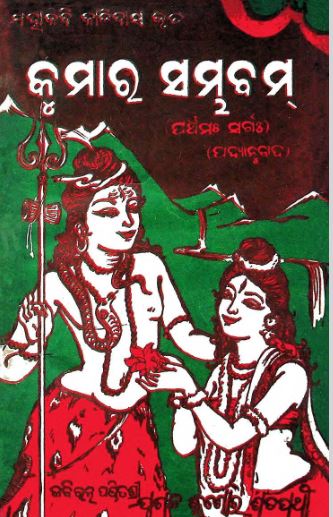Kumar Sambhabam, originally crafted by the illustrious Sanskrit poet Kalidas, remains one of the quintessential works of Indian literature. The 1994 edition edited by K.C. Misra offers readers a rich exploration of this text through the lens of Odia poetry, enhancing its cultural significance while preserving its original poetic beauty. This profound piece not only engages with themes of love, beauty, and divine intervention but also serves as an intricate tapestry blending mythology with the human experience.
At its heart, Kumar Sambhabam recounts the birth of Kumara (or Kartikeya), the son of Shiva and Parvati, portraying the cosmic drama of creation, love, and the battle between good and evil. Kalidas imbues the narrative with lyrical elegance, rendering a divine story that resonates with human emotions, desires, and the intricacies of relationships. The text employs a blend of prose and poetry, making it a multifaceted read that captivates both scholars and casual readers alike.
The verses depict the deep love between Shiva and Parvati, exploring how divine love mirrors human emotions. This relationship serves as a foundation for understanding love’s transformative power, portraying love as both a celestial and terrestrial force.
Kalidas’s poetry often draws on vivid natural imagery that reflects the grandeur of the cosmos and the beauty of earthly existence. The editor’s annotations and discussions shed light on how nature’s aesthetics amplify the emotional landscape of the narrative—rivers, mountains, and seasons all play crucial roles in creating a backdrop for the unfolding drama.
The struggle against evil represented in the birth of Kumara highlights themes of heroism, valor, and the eternal conflict between righteousness and malevolence. This motif resonates through the ages, encouraging readers to reflect on their own battles against adversity.
K.C. Misra’s editorial contributions bring a scholarly depth to “Kumar Sambhabam,” inviting readers to explore its historical, cultural, and philosophical dimensions. Misra provides insightful discussions that relate the text to other literary works, elucidating how Kalidas’s influence permeates the fabric of Odia literature and beyond. The discussions encourage readers to contextualize the themes of the text within contemporary society, making it relevant even years after its original creation.
One of the standout features of this edition is the thoughtful translation of verses from Sanskrit to Odia. Misra’s commitment to preserving the original’s poetic structure and emotional resonance allows readers to experience Kalidas’s work in a new light. The translations are accompanied by footnotes and commentary, enriching readers’ comprehension while maintaining the lyrical quality inherent in Kalidas’s poetry.
Kumar Sambhabam, as edited by K.C. Misra, is a remarkable fusion of literary scholarship and poetic beauty. It invites readers to immerse themselves in a world where the divine dances with the human spirit, showcasing the rich legacy of Indian mythology through the lens of Odia poetry. Transcending time, it continues to inspire and evoke deep reflections on love, valor, and the nature of existence, making it an indispensable addition to any literary collection. Whether one is a seasoned scholar or a curious newcomer, this edition promises to enrich one’s understanding of Kalidas’s enduring masterpiece.
Books Info
| Books name | Kumar Sambhabam |
| Author | Kalidas; Jugal Kisor Satapathy, Tr. |
| No Of pages | 106 |
| Publisher | Chetana Prakashani |
| Publication | 1991 |
| Printed At | Nirada Printers |
| Distributor | NA |

